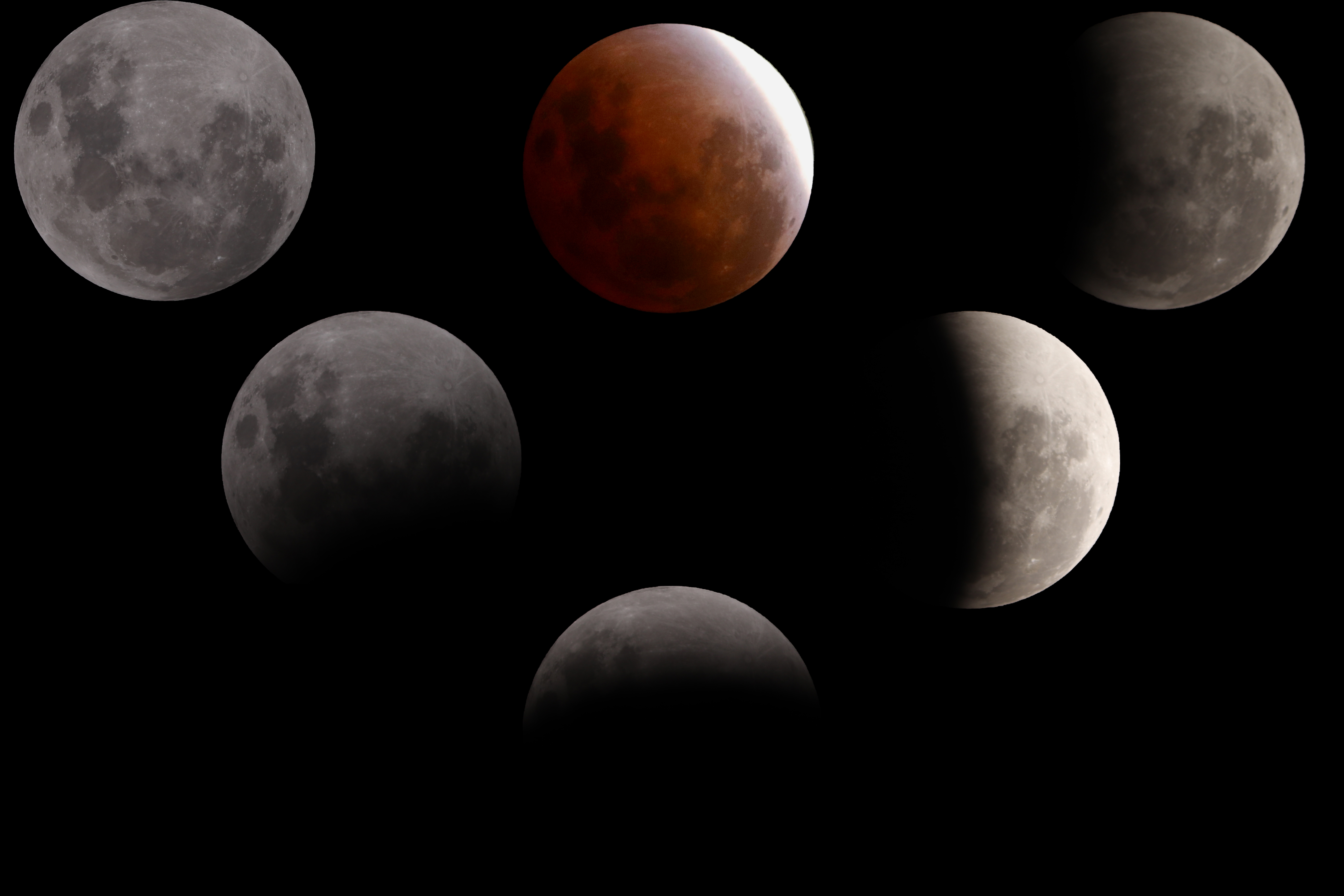Details
A lunar eclipse occurs when the Moon passes into the shadow cast out into space by the Earth. The parts of the Moon in this shadow no longer have direct sunlight shining on them and so appear dark to us. As the Moon and Earth move through space different amounts of the Moon pass into this shadow, causing the eclipse to go through different 'partial' phases. If the whole of the Moon passes into the shadow, the eclipse becomes 'total'. However, in reality, the parts of the Moon in the Earth's shadow actually appear a red/orange color due to red light being redirected by the Earth's atmosphere into the shadow zone. The lunar eclipse of November 19, 2021 was almost, but not quite, total, with just a little sliver of the Moon left with direct sunlight shining directly on it.
Darsh used a medium-power refracting telescope connected to a regular DSLR camera to take his images. This combination allowed the Moon to be a reasonable size in the images but also allowed for some drift in the field of view, so that corrections did not have to be made too often. Unlike deep-sky imaging of very dim objects, good pictures of the Moon can be captured in very short exposures and so Darsh followed the eclipse by capturing an image approximately every 60 seconds. As the eclipse proceeded, exposure parameters were adjusted to accommodate changes in total brightness of the Moon. Around the maximum eclipse, slightly longer exposures were taken to capture the color of the eclipsed part of the Moon.
This resulted in 240 images, which were processed in SiriL and Photoshop. Darsh then selected six of these images to put in a composite picture showing the eclipse in various phases.

